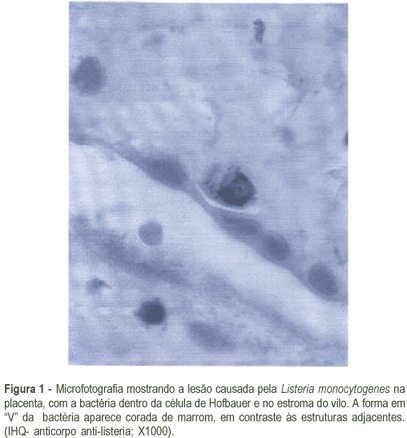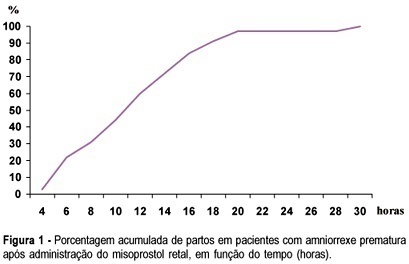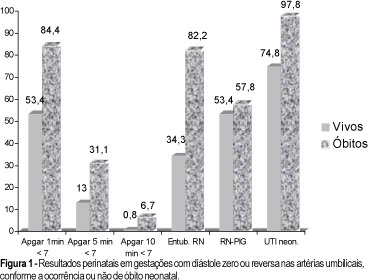Summary
Revista Brasileira de Ginecologia e Obstetrícia. 2003;25(7):507-512
DOI 10.1590/S0100-72032003000700007
PURPOSE: to evaluate the prevalence of osteoporosis in climacteric women and analyze the influence of general and reproductive risk factors on bone mineral density. METHODS: a cross-sectional study with the evaluation of the 473 hospital records of climacteric women followed up at the Menopause Outpatient Facility of CAISM/Unicamp, between 03/28/2000 and 04/17/2001. These women were at least 12 months in amenorrhea and presented the results of a bone densitometry study performed at the Nuclear Medicine Department of HC/Unicamp. The following variables were evaluated: age, color, body mass index, level of education, smoking, use of medication, age at menopause, parity, use and length of hormone replacement therapy and its effect on bone mineral density. Statistical analyses were performed using logistic regression ajusted by age and hormone replacement therapy use. RESULTS: the mean age of the studied women was 53.9 years (± 7.1 SD) with mean age at menopause being 45.9 years (± 6.9 SD). Osteoporosis occurred in 14.7% and osteopenia in 38% of the cases in the lumbar vertebrae (L2-L4 interspace) and in 3.8 and 32.7% in the femur, respectively. Logistic regression adjusted to age and hormone therapy showed an association between the following variables: level of education, age at menopause and body mass index. CONCLUSION: there was a high prevalence of osteoporosis and osteopenia in the studied population. Advanced age, lower level of education, late menarche, early menopause and lower body mass index were identified as risk factors for developing decreased bone mass in the studied population.
Summary
Revista Brasileira de Ginecologia e Obstetrícia. 2003;25(7):501-505
DOI 10.1590/S0100-72032003000700006
PURPOSE: to identify Listeria monocytogenes (Lm) in human placentas by immunohistochemistry (IHC) and relate its presence to the histological alterations found on conventional examination, to the pregnancy trimester, age of pregnant women, cases of abortion and premature delivery, and to the occurrence of habitual abortion. METHODS: a retrospective study was carried out at the pathology service of a teaching hospital in the city of Porto Alegre in 2000. The paraffin blocks of 254 placentas, obtained from abortion, premature delivery and full-term birth, were analyzed by conventional histology using hematoxylin and eosin (HE) staining. The IHC assay consisted of a rabbit anti-listeria polyclonal antibody B65420R (Biodesign®) diluted 1:1000, in addition to the avidin-biotin-streptavidin complex; 148 placentas revealed inflammatory disorders, hemorrhage, necrosis and thrombosis. The c² test was used for statistical analysis. RESULTS: Listeria monocytogenes was detected in 33.78% of the placentas analyzed by IHC. Chorioamnionitis and villitis showed significant statistical difference in the positive placentas. Lm occurred in the 1st, 2nd and 3rd trimester of pregnancy. The age of pregnant women, the cases of abortion and/or premature births were not statistically different as to the presence or absence of Lm in the placentas. Habitual abortions occurred in patients with or without Lm in the placental tissue. CONCLUSION: Immunohistochemistry may be used to confirm the histopathological diagnosis of listeriosis in all trimesters of pregnancy.

Summary
Revista Brasileira de Ginecologia e Obstetrícia. 2003;25(7):491-499
DOI 10.1590/S0100-72032003000700005
PURPOSE: to investigate whether rectally administered misoprostol is an effective method for induction of labor in patients with premature ruptured membranes at term. METHODS: a pilot trial was conducted, enrolling 32 women with alive, singleton, cephalic fetus and ruptured membranes between 36 and 41 weeks of pregnancy, with Bishop score <6 and without evidence of labor. They received rectal misoprostol (tablets of 50 mg) every 4 h until active labor was diagnosed. Patients with ruptured membranes for >18 h received antibiotics (crystalline penicillin) for prophylaxis of streptococcal infeccion. Outcomes included time from induction to labor and induction to delivery, incidence of tachysystole, mode of delivery, incidence of chorioamnionitis and neonatal outcome. Statistical analysis was performed using the public domain software Epi-Info 2002. Means and standard deviations were calculated, as well as frequency distributions. Survival analysis was performed to determine percent of deliveries according to time (hours) since the administration of the first tablet. RESULTS: the mean (±SD) induction-to-labor and induction-to-delivery intervals were 299.8±199.9 and 681±340.5 min, respectively. The frequency of tachysystole was 9.4%. About 72% of patients achieved vaginal delivery. Chorioamnionitis was diagnosed in 12.5% of the patients. Median Apgar scores at 1st and 5th min were 8 and 9, respectively. There was no case of Apgar <7 at the 5th min. Neonatal sepsis occurred in 12.5% of the neonates. CONCLUSION: induction of labor with rectal misoprostol in the setting of premature rupture of membranes was effective, with 72% of vaginal deliveries and a low rate of chorioamnionitis. These findings must be confirmed by large randomized controlled trials.

Summary
Revista Brasileira de Ginecologia e Obstetrícia. 2003;25(7):483-489
DOI 10.1590/S0100-72032003000700004
PURPOSE: to describe the pregnancy outcome of women submitted to cervical cerclage during pregnancy. METHODS: a series of 123 pregnancies in 116 women submitted to elective cervical cerclage by Espinosa-Bahamondes, Palmer and MacDonald techniques and followed at the High-Risk Antenatal Care Unit at CAISM/UNICAMP is described. Variables were analyzed through frequency, mean and standard deviation, comparisons were made using c² or Fisher exact tests. RESULTS: 73% had at least one previous abortion, 17.9% had had 3 prior abortions, and 48% had prior preterm deliveries. The mean gestational age at cerclage was 16 weeks. Cerclage by the Espinosa-Bahamondes technique predominated (94.3%). The overall complication rate was 69%, with preterm labor as the most frequent (31.7%), followed by vaginitis (26%), preterm premature rupture of membranes (10.5%) and fetal death (8.7%). Other clinical complications were less common and included urinary tract infections (5.6%), hypertensive disorders (4%) and gestational diabetes (2.4%). Fetal loss occurred in 8.9% of pregnancies (11 stillbirths). Premature deliveries were present in 18%. History of previous premature deliveries was associated with the occurrence of premature deliveries. CONCLUSION: Obstetrical history compatible with cervical incompetence was frequent, and prior preterm delivery was associated with a preterm delivery in the pregnancy under analysis. The use of cerclage by the Espinosa-Bahamondes technique resulted in 18% of premature newborns, and 104 per thousand rate of perinatal death. Prospective, controlled trials are needed to evaluate the real benefits of cervical cerclage performed during pregnancy.
Summary
Revista Brasileira de Ginecologia e Obstetrícia. 2003;25(7):475-479
DOI 10.1590/S0100-72032003000700003
PURPOSE: to study the effects of low-dose oral hormonal contraceptives (OHC) (<30 mg of ethynylestradiol) on the intraerythrocytic folate levels. METHODS: this was a prospective transversal study with 95 patients treated in the Family Planning Clinic of UNIFESP (Federal University of São Paulo). The control group (Condom group) consisted of patients using condom as their exclusive contraceptive method during the last 12 months, and the study groups consisted of patients using low-dose oral hormonal contraceptives, in the following way: OHC 3 group (three to six months of use), OHC 6 group (six to twelve months of use) and OHC 12 group (more than twelve months of use). Intraerythrocytic folate was determined by the ionic capture method. Analysis of variance and c² test were used for statistical analysis. RESULTS: the Condom group showed a rate of 44% of patients with folate lower than 186.0 ng/mL and the users of low-dose oral contraceptives showed a rate of 32% (OHC 3 group), 16% (OHC 6 group) and 31% (OHC 12 group). We did not find in the group using low-dose oral contraceptives a significant reduction in the average level of intraerythrocytic folate compared to the control group and there was no statistically significant difference (p=0.28) regarding time of use. CONCLUSION: we observed reduced levels of intraerythrocytic folate in a significant number (44%) of patients not using low-dose oral hormonal contraceptives. Their rates were similar to the lower limit considered to be normal by most authors, which points to a basal folate deficiency in the studied group. We did not observe any alteration in the level of intraerythrocytic folate in patients using low-dose oral hormonal contraceptives.
Summary
Revista Brasileira de Ginecologia e Obstetrícia. 2000;22(6):365-371
DOI 10.1590/S0100-72032000000600007
Purpose: to evaluate the accuracy of prenatal ultrasound in the diagnosis of nephrouropathies. Methods: the authors followed-up 127 pregnancies referred to the Fetal Medicine Center of UFMG with suspicion of these anomalies. Fetal biometry, growth, vitality, and associated malformations were evaluated. Finally, a detailed description of the renal system was made to define the prenatal morphologic diagnosis of the malformations to be compared with the postnatal diagnosis. Results: based on the kappa index (statistical method that measures the concordance between different measurements, methods or measurement instruments: below 0.40, poor agreement; between 0.40 and 0.75, good agreement; above 0.75, excellent ageement), the authors found an excellent concordance (kappa index 0.95). Among the 127 cases, there were only 9 misdiagnoses, all of them of obstructive uropathies: 6 cases showed different obstruction levels after delivery and in three cases there were confounding diagnosis with multicystic kidney. Conclusions: the detailed ultrasonographic description of the renal system is a good method for prenatal diagnosis of the fetal nephropathies, allowing some options to modify the outcome of these fetuses, like to send them to specialized centers, to anticipate delivery and even to apply intrauterine therapy, in order to preserve the renal function. Serial echography and amnioinfusion can be used to improve the precision of prenatal diagnosis.
Summary
Revista Brasileira de Ginecologia e Obstetrícia. 2000;22(6):353-363
DOI 10.1590/S0100-72032000000600006
Purpose: to study the prognostic parameters for perinatal death in pregnancies with absent or reversed end-diastolic flow velocity on umbilical artery dopplervelocimetry. Methods: two hundred and four pregnancies were retrospectively reviewed. The methods used were cardiotocography, fetal biophysical profile, amniotic fluid index and dopplervelocimetry of ductus venosus, fetal aorta, middle cerebral artery, umbilical arteries and uterine artery. The logistic regression model was applied to one hundred and seventy cases in order to determine the most accurate variable for predicting perinatal death. Results: the mortality rates were: 28 cases of intrauterine fetal death (13.7%) and 45 neonatal deaths (22.1%). A statistically significant correlation was found between death and the studied variables. The perinatal death rate in the group with birth weight below 1,000 g was 74.7%, and in the group with gestational age at delivery below 31 weeks it was 66.3%. By logistic regression, birth weight was the most accurate variable for predicting perinatal death, and a probability curve for death according to this variable was obtained. Conclusions: absent or reversed end-diastolic flow velocity in the umbilical arteries is a severe fetal condition, where the risk of perinatal death is mainly related to birth weight and a gestational age at delivery below 31 weeks.
